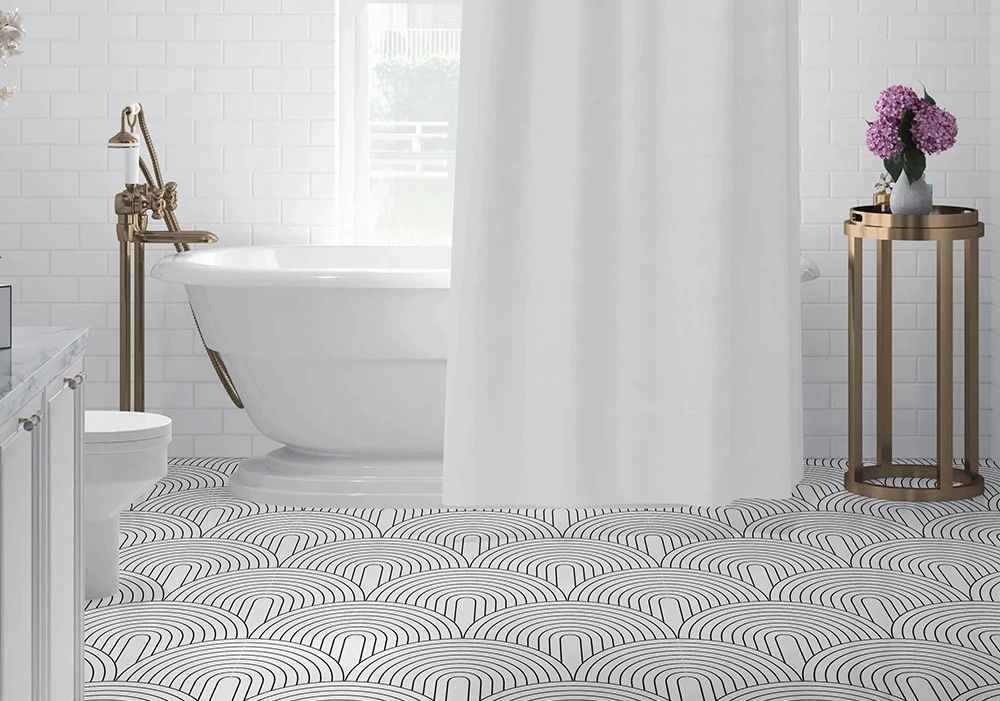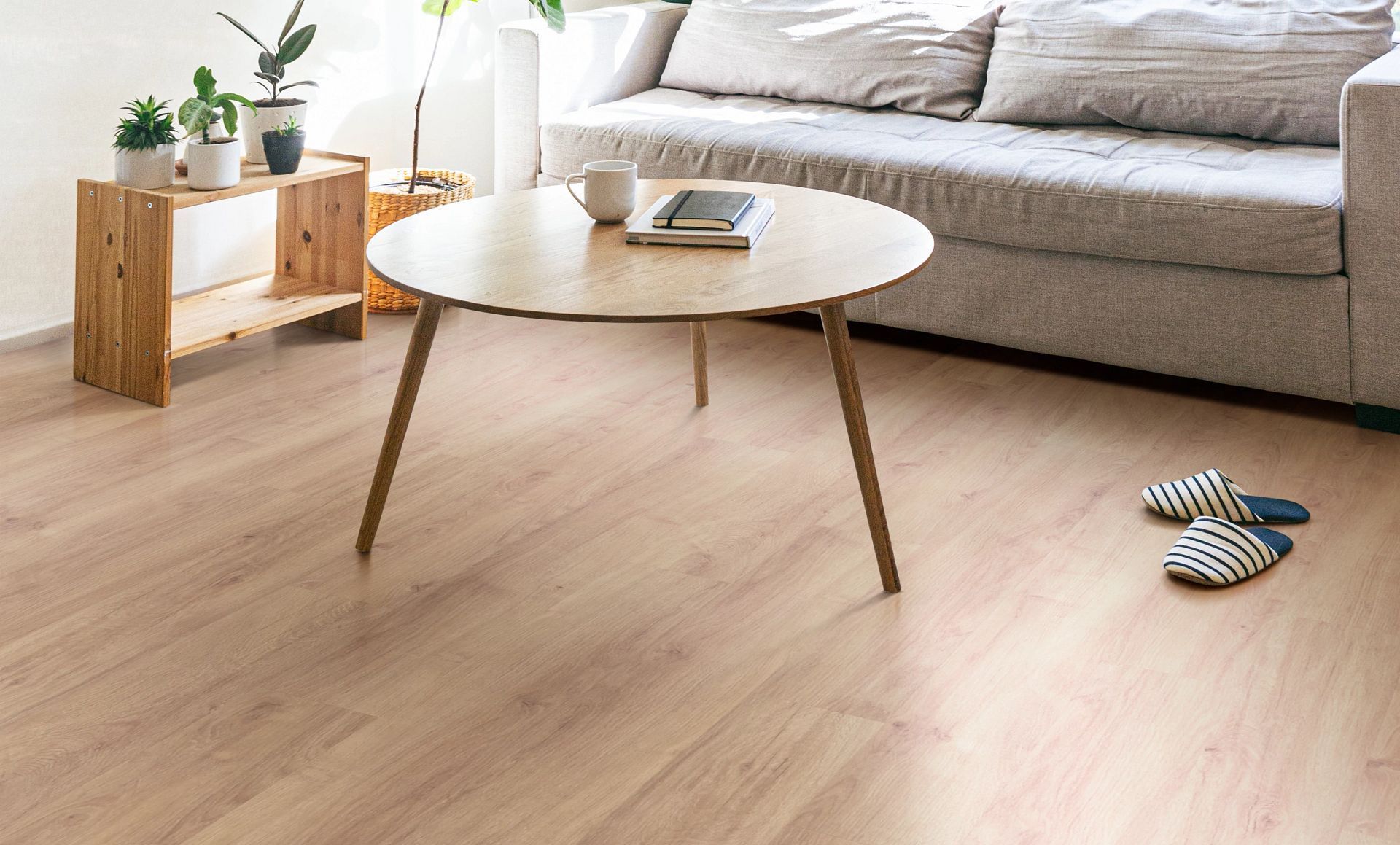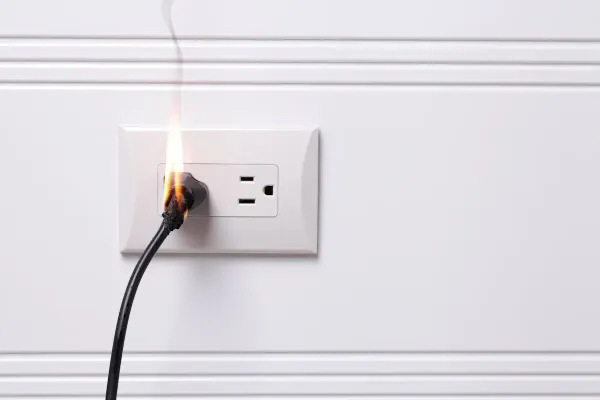Plastic laminate was initially popular in the 1940s and 1950s for use for flooring and kitchen countertop materials. It had begun to fall out of favor with consumers by the late 1980s. But in the last 10 years, laminate flooring has been reborn with a innovative new materials, patterns, colors and installation options. Building contractors and homeowners have discovered that plastic laminate floors are extremely resilient, stain-resistant, affordable, quick and easy installation.
With the right tools and some basic skills, you can have a brand-new floor by the weekend!
Laminate floors give homeowners elegant flooring at a lower price compared to LVP and they're also easier to install. The tongue-and-groove or snap-and-click jointing makes laminate floor installation perfect. Anyone with a good grasp of the basics can get the basics right on the floor. This step-by-step guide on how to install laminate flooring will guide you through the process.
7 Steps for Installing Laminate Flooring
The most efficient method of installing laminates starts with the floor surface or older flooring, which should be flat and smooth. It's essential to use an adhesive layer to cover the laminate floor. Before you start installing laminate flooring, remove any baseboard or trim around the walls and doors.
1) Acclimate Your Planks and Prep the Subfloor
The laminate flooring must then be adapted first to the room. Place the pieces of laminate at the location where it's being installed and let it rest for a maximum of 48 hours. They can acclimate themselves to the humidity conditions within the room prior to installation.
The next step will be preparation. You'll know that installing flooring is secure once the floors are clean. You may often install laminate over old floor coverings such as sheets of vinyl when it is smooth but flat. Generally however, you should remove existing flooring if the surface isn't smooth and level.
2) Trim Door Jambs
It is usually easier to lay floor over doors underneath door jambs and trim rather than cutting the floor to fit irregular shapes. When you cut wood jambs or trim off the bottom of the doors, your floor is placed underneath and has smoother results. Use pencils to mark the area where laminates are placed in the frame. It will show where the cut should be. Use a saw or multitool to cut small pieces of wood. Now the floor can slide easily beneath the little gap and create a seamless look.
3) Install the Underlayment (If required)
While more common with floating floor products, some laminate manufacturers advise placing an underlayment on the subfloor before installation. This small dense foam acetate layer absorbs sound, as well as provides thermal insulation that provides comfort when walking on laminated surfaces and also helps to cover minor gaps or snags in underlying flooring.
4) Lay Your First Row of Laminate
You have to decide what wall to install. It is recommended to start applying flooring on long walls. However if your room has primarily an area with an attractive focal point like fireplaces or large windows it may be worth installing flooring parallel to these walls. You can begin with the planks against the walls.
If necessary, you can also remove the tongue with utility knives. Although the base boards cover the entire first and last row, it's not necessary to trim the tongue. Put in place the groove of the first piece and press to hold it tightly.
- Install the laminate planks: Start in one corner of the room and lay the first plank with the tongue facing the wall. Use spacers to maintain a consistent gap between the planks. Snap the next plank into the first, making sure to stagger the seams. Continue laying the planks row by row until you reach the other side of the room.
- Finish the edges: Once you have installed all the full planks, measure and cut planks to fit in the remaining gaps along the edges of the room. Use transition pieces to cover any gaps between the laminate floor and other flooring types, and install quarter round or baseboards around the perimeter of the room to cover the expansion gap.
- Start in the right spot: When starting to install the flooring, it's important to start in the right spot. Start in a corner of the room and work your way out from there. This will ensure that the flooring is installed straight and the boards are properly aligned. Also, use spacers to maintain an expansion gap between the flooring and the walls, which will allow for the natural expansion and contraction of the laminate due to temperature and humidity changes.
- Cut the planks in different lengths: When installing the planks, cut them in different lengths to create a more natural and random pattern. A repeating pattern may not look as good and can be distracting.
5) Prevent Warping by Eliminating Any Spaces That Could Allow Moisture Under the Floor
Because laminate flooring can easily rust and get water damage, the absence of gaps is vital. You have to remove the spaces to get a new baseboard installed. If the spacers are removed you risk your newly constructed floor slipping in the air over the years. Installing laminate floors yourself may be cheaper than relying on a professional laminate flooring contractor and may also be smoother if you know how to proceed effectively.
6) Install the Remaining Rows
Use the leftover laminate planks that you cut at the end of the first row to start the next row. Just make sure the pieces are at least 18" long. You want to avoid having several small planks in one area.
- Remember to stagger the seams of the laminate flooring by at least 12 inches from any adjacent seam will provide additional stability and a more authentic appearance.
- To start the second row, insert the tongue of the plank at an angle into the groove of the installed row and press down to snap it into place.
- To prevent water damage, ensure that there are no gaps between the seams, which may require the use of a tapping block.
- Repeat the process for each subsequent row
7) Maintain Your New Floors
Proper maintenance is essential for keeping your new laminate flooring looking good for years to come. Here are some tips for maintaining new laminate flooring:
- Wipe up spills and stains immediately to prevent moisture damage. Use a slightly damp cloth or mop with a cleaning solution specifically designed for laminate flooring.
- Avoid harsh cleaning products and tools such as steel wool, abrasive cleaners, or scrub brushes that can damage the floor's surface. Instead, use a mild cleaner or a cleaner recommended by the flooring manufacturer.
- Place mats or rugs at entrances and high traffic areas to trap dirt and prevent it from scratching the flooring. Make sure the backing on the mat is non-slip to prevent tripping hazards.
- Use furniture pads under the legs of chairs, tables, and other heavy furniture to prevent scratches and dents on the flooring.
- Avoid excessive sunlight or UV exposure, which can fade the color of the flooring. Use curtains or blinds to limit exposure to direct sunlight.
By following these tips, you can keep your new laminate flooring looking beautiful for years to come.
Is Laminate Better than Peel & Stick Vinyl?
When considering new floors, many homeowners consider several other styles. While each have benefits, some rehabbers and designers like to use peel & stick Vinyl as a substitute for laminate. You can learn more below.

Conclusion
Installing laminate is a fantastic option for DIY enthusiasts. By following our guide, you'll discover the easiest way to install laminate flooring. As we covered, laminate is functional, attractive and budget friendly.
But, if you're still undecided about which flooring material is best for your property, check out other options like cork flooring or ceramic tile. Good luck on your next project!






